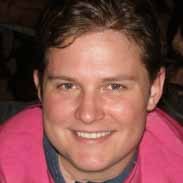Chapter 7 Study Guide- Cells
Unlock all answers in this set
Unlock answersquestion
active transport
answer
movement of materials against a concentration difference without energy
question
cell
answer
basic unit of life
question
cell membrane
answer
controls what goes in and out of the cell and protects/supports it; located around the cell
question
cell theory
answer
states that all living things are composed of cells; cells are the basic unit of structure and function in living things; new cells produce from existing cells
question
cell wall
answer
provides protection and support; surrounds plant cell membrane
question
chloroplast
answer
capture sunlight and converts it into food/energy for the cell to use; scattered freely in cytoplasm of a plant cell
question
cytoplasm
answer
fluid portion outside the nucleus
question
diffusion
answer
process by which particles move from an area of lower concentration
question
endoplasmic reticulum
answer
suggests the complexity of the cell and lipid components are assembled with proteins and other materials; located near the outer membrane
question
eukaryote
answer
has DNA in nuclei and are larger and more complex; high specialized; examples: plants, fungi, animals
question
facilitated diffusion
answer
molecules that cannot directly diffuse across the membrane, but pass through special protein channels
question
golgi apparatus
answer
modifies, sorts, and packs proteins in and out of the cell; located near the endoplasmic reticulum
question
homeostasis
answer
unicellular organisms achieve this with relatively internal physical and chemical conditions
question
hypertonic
answer
when comparing 2 solutions, the one with the greater concentration of solutes
question
hypotonic
answer
when comparing 2 solutions, the one with the lesser concentration of solutes
question
isotonic
answer
when the concentration of 2 solutions is the same
question
lipid bilayer
answer
gives the cell membrane flexible structure to form a barrier between the cell and its surroundings
question
lysosome
answer
filled with enzymes; takes wastes from cell and breaks it down; located in cytoplasm
question
mitochondria
answer
converts chemical energy stored in food to compounds for the cell to use
question
nucleus
answer
contains DNA and is the control center
question
organ
answer
to perform complicated tasks, many groups of tissues work together
question
organ system
answer
groups of organs that work together to perform a specific fucntion
question
organelle
answer
specialized organ
question
osmosis
answer
diffusion of water through a selectively permeable membrane
question
passive transport
answer
regulates the movement of molecules from one side of the membrane to the other side with energy.
question
prokaryote
answer
no DNA in nuclei; example: bacteria
question
receptor
answer
used to respond to chemical signals; signals molecular binds; located on the cell membrane
question
ribosome
answer
produce proteins that have coded instructions from DNA; found throughout cytoplasm
question
selectively permeable
answer
some substances pass across
question
tissue
answer
group of similar cells that perform a particular function
question
vacuole
answer
stores materials; surrounds nucleus
question
vesicle
answer
store and move materials between vacuoles; located near the golgi apparatus
question
What are the 3 statements that make up the cell theory?
answer
1. all living things are made of cells 2. cells are the basic units of structure and function in living things 3. new cells produce from existing cells
question
What scientists contributed to the formation of the cell theory? What was the contribution of each?
answer
Matthias Schleiden: concluded that all plants are made of cells Theodor Schwann: stated that animals are made of cells Rudolf Virchow: concluded that cells come from the division of existing cells
question
Compare and contrast prokaryotic and eukaryotic cells.
answer
prokaryotes: no DNA in nuclei; smaller and simpler; still grow, reproduce, respond, etc. eukaryotes: has DNA in nuclei; larger and more complex; contains structures that are highly specialized
question
Identify ways that plant and animal cells are different.
answer
Plants have cholroplasts, cell wall, leucoplasts. Animals have chromatin, nuclear gap, cytoplasm, centriole.
question
Describe the process of diffusion, including an explanation of equilibrium.
answer
Diffusion is the intermingling of substances by natural movement of their particles. Equilibrium is the state in which a process and its reverse are occurring at equal rates so that no overall change is taking place
question
What is the difference between passive transport and active transport? Give examples of each.
answer
Passive transport regulates the movement of molecules from one side of the membrane to the other side- energy required; examples: diffusion, osmosis. Active transport is movement of material against a concentration difference- no energy required; examples: endocytosis, exocytosis
question
What would happen to a sample of your red blood cells if they were placed in a hypotonic solution? Explain.
answer
Water would go through the cell and it would collapse. Hypotonic solutions cause cells to swell and burst when filled with water because of the solution's concentration of dissolved substances which is lower than solution outside of the cell.
question
Explain how cell, organ, tissue, and organ system are related.
answer
Cells are the basic structural units of any multicellular organism. A group of one type of cells together form tissue. Groups of tissues together in one organized structure that serves purposes to organs. A group of organs that serve similar functions make up an organ system. Cells> tissues> organs> organ systems



